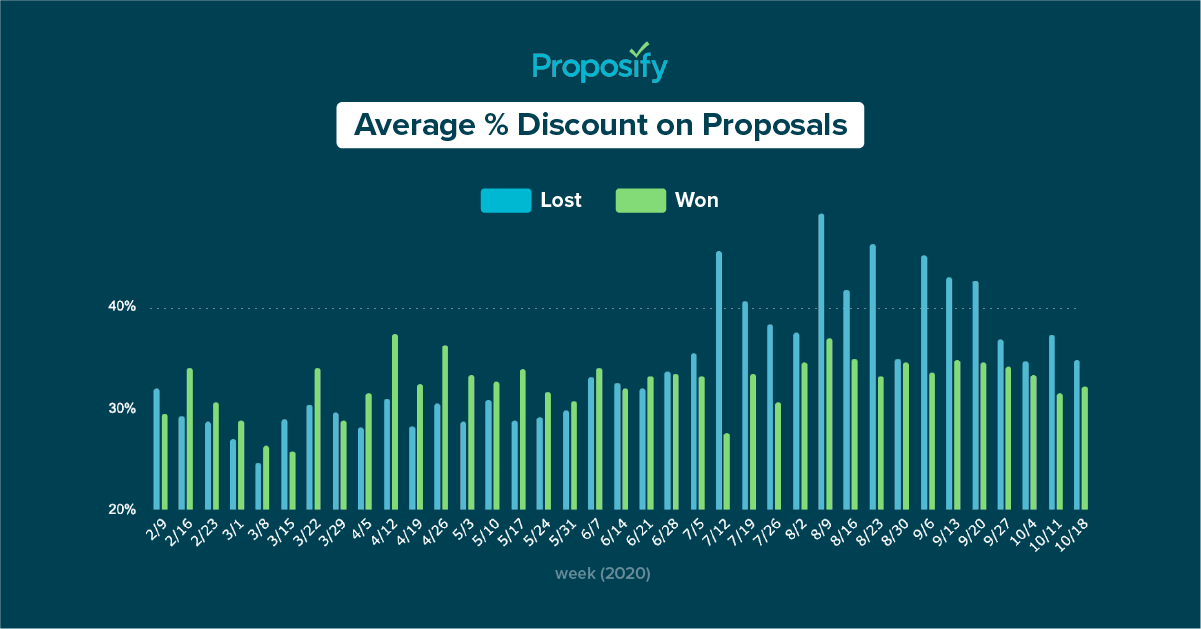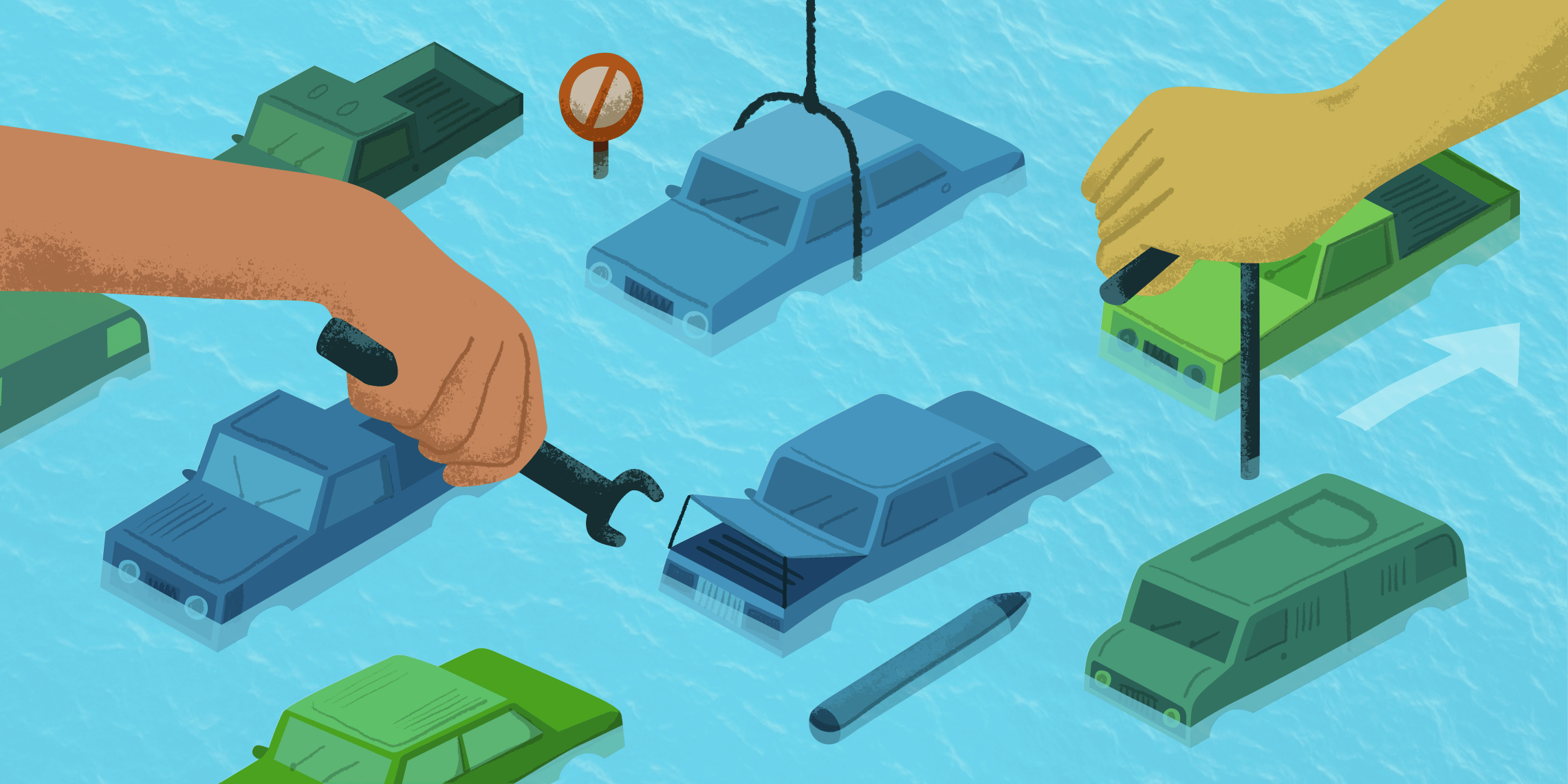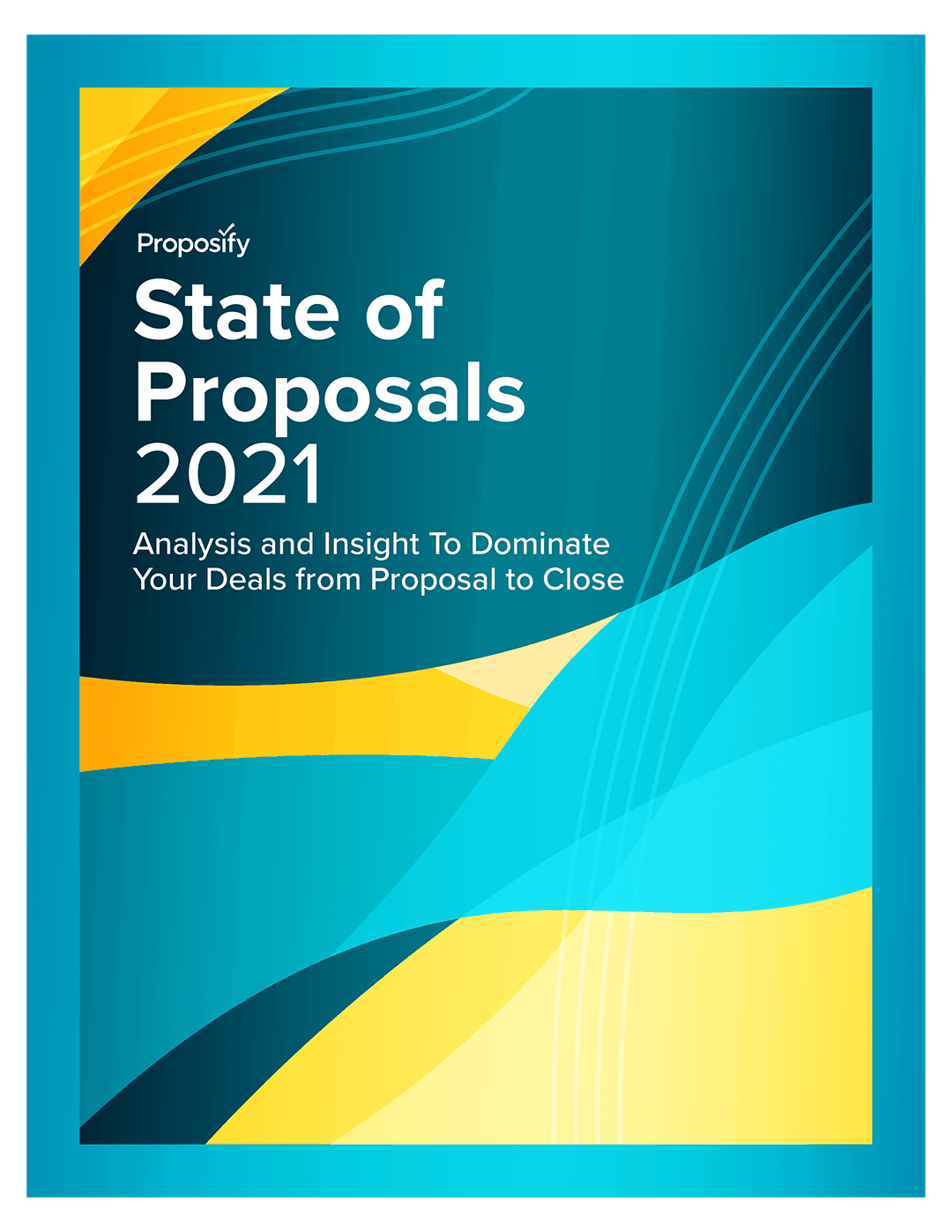Ah, December. While other folks start winding down in anticipation of holidays and such, salespeople are ramping up. And I don’t mean just for the New Year and a fresh Q1.
December is a BIG month for closers. When we looked at winning proposals in our Proposify database, we found that the last month of the year is actually first in won deals. December has the highest close rate, with 38% of all sent proposals closing.
And so is December!
There are a few reasons why buyers might be more inclined to sign off at the end of the year, including:
- Clients can get some of the prep work, project admin, and other deal details settled before the holidays, so they can hit the ground running with your product or service as soon as possible in Q1.
- They sometimes find they have some budget wiggle-room left. And if not, some businesses may agree to a ‘sign-now, pay-in-the-New-Year’ arrangement.
- Everyone is looking ahead to a fresh year, resolutions, and all that, which might inspire a change in the processes or products they use.
So, I dipped back into the data again to find five of our top proposal trends, tips, and tools from the past year that will help you close this month and beyond.
5 research-backed ways to send winning proposals
We’re always looking for new trends, tips, and techniques to help you make your proposals as compelling as possible for your prospects.
Here are five of the best things we found this year. And they’re not just anecdotal—we’ve got the statistics and data to back up their winning ways.
1. Go deeper with your proposal content, not broader
Compared to five years ago, today’s proposals have two fewer sections but 57% more content. This suggests customers want more detail on what matters most to the deal.
So, which sections should you focus on? Here are the seven most-included sections:
Cover Page
Your cover page doesn’t have to be flashy, but it must be well-designed and include important details like the client name, your name and contact info and the date submitted.
Executive Summary
Contrary to popular belief, the executive summary isn’t a summary of your whole proposal. It’s a summary of why your solution is the right one, showing why your prospective client should choose your company over the competition.
Approach/Solution
Here, outline your approach to solving the client’s pain points and the process involved.
About Us/Our Team
Use this section to explain who you are as a company: what you do, why you exist, your expertise, and your unique value proposition.
Deliverables
Get everyone on the same page by describing the scope of what the client can expect to receive from you and when, plus anything you might need from them, like feedback or approvals.
Budget
Ah yes, the section many prospects flip to first: the investment. Here you’ll include your pricing tables, packages, and/or product descriptions.
Terms & Conditions/Sign-Off
This important section includes all the legalese with a spot to capture client signatures.
If you’re having trouble trying to keep your proposals succinct, our experts recommend editing out any information that doesn’t help the buying decision and/or that won’t come into play until the deal is closed. For example, you can always send your super-detailed deliverables timeline separately or as part of a welcome package once the deal is signed. That way, your buyer won’t get bogged down in the details.
2. Get it out quickly
This one probably doesn’t come as a shock but it might surprise you just how fast you need to be to get ahead of your competition: the majority of winning proposals are sent in just under an hour.
How do they do it? In a word: automation. Here are three ways to add it to your proposal process to help you get deals done faster.
A quicker proposal creation workflow
Having too many touchpoints in your proposal workflow means too much time spent and we all know what time does to deals. If you’re still using Word and PowerPoint, you’re already running behind. Proposal software can reduce those manual touchpoints in your process. For example, it can automatically create a proposal once a deal hits a certain stage and pull in all the details from your CRM.
A bottleneck-free internal approval process
At Proposify, we often hear from sales teams that their internal proposal approval process is where some of the biggest bottlenecks occur. A modern approval process should be automated. In Proposify, users who need approval before sending simply click a button to notify an approver that there’s a proposal awaiting their eyes. The approver then receives a notification and can click right over to take a look and leave feedback, approve or reject it.
A simple sign-off
Automating signatures is a really quick way to get a win. When you have an agreement in front of a hot prospect and the electronic signature box is right there, all they need to do is click and boom, it's done. No printing, no looking for a pen, no scanning and emailing back.
With an all-in-one proposal tool like Proposify, you can drag-and-drop signature boxes right into your proposal and even add unassigned signatures if you’re not exactly sure who will be signing on the client-side. That means you can send the proposal out even faster since there’s no need to wait around for that confirmation.
Ultimately, adding automation in these areas keeps deals moving forward—without taking up any more precious selling time.
3. Sign before sending (and use esignature)
Countersigning is the technical term for when you sign a proposal or contract before sending it off to your client for their signature. We found when we analyzed the more than 2 million proposals in the Proposify database that proposals that were countersigned had a 12% higher close rate than those that weren’t.
What else improves your close rate when it comes to sign-offs? I mentioned how using electronic signatures in your proposal helps you close faster. In fact, we found that not only do esignatures help proposals close 32% faster, they also make the proposal 3.4x more likely to close.
4. No more boring proposals
What else has an impact on close rates? Modern features that make your proposals more attractive and easy-to-use. Here are a couple of the most important ones.
Images
Is an image really worth a thousand words? It might actually be worth a thousand deals. We found that including images in your proposal increases close rates by 23%.
Interactive elements
Why send a static doc when you can send an interactive one? Customizable features, like selectable fee tables and fillable forms, make it easy for clients to say yes—proposals with these elements close up to 65% faster.
Check out my video below for three more ways to update your proposals.
5. Think twice about that discount
Adding a discount to proposals has been a popular strategy in 2020 and it’s often used as an end-of-quarter incentive. Our data shows that the number of proposals with some level of discounting more than doubled in 2020.
So, should you start slashing your prices too? Not so fast. The close rate on those discounted proposals has been dropping steadily. The average close rate for discounted proposals hit a high in July at 40% and has since fallen below 30%. This is even as the size of those discounts increased.

How are discounted deals faring in the long-term? Well, the data also shows that heavier discounting correlates with higher churn rates. Customers who expect and/or accept heavy discounts might not end up being your best customers. It makes sense: those who actually see the value in your product or service are more likely to invest and will make for better customers.
What does the data tell us about what proposal discounting might look like in 2021?
- Since so many businesses have been discounting, slashing your proposal pricing might not make it stand out.
- If you do decide to discount, 30% or less is better for your close rate and 15% or less for customer retention.
Ring in the new deals
In the end-of-year rush to close, don’t forget about the small details. Like saying thank you.
Now, I only have anecdotal data that shows saying, ‘Hey, thanks!’ to your customers and colleagues has a positive effect on those relationships. But we do know that two out of every three buyers cite customer experience as more important than price. And feeling unappreciated is the number one reason why customers switch vendors.
Since time is at a premium, check out my video for a quick way to put together easy thank-you notes and close out the year on a high note.



